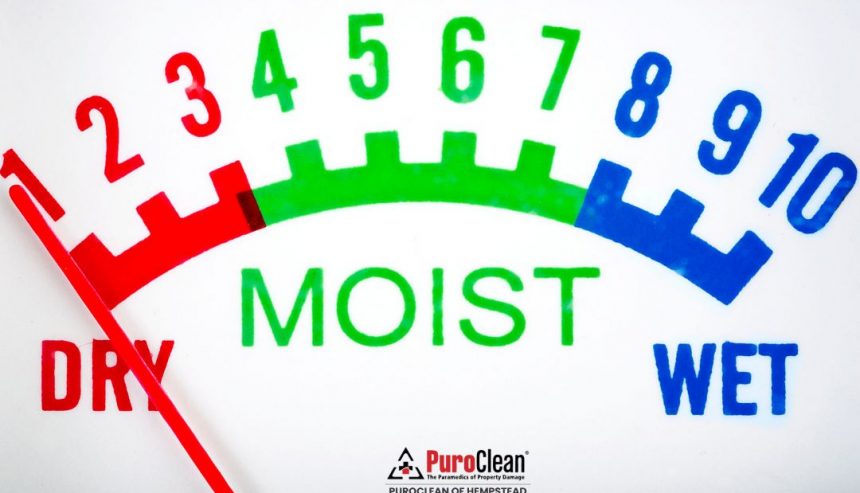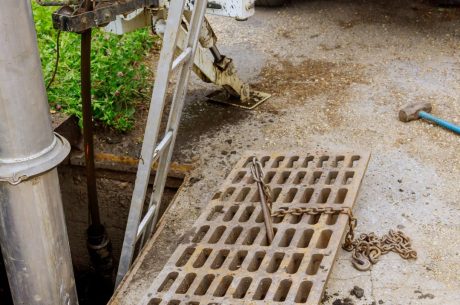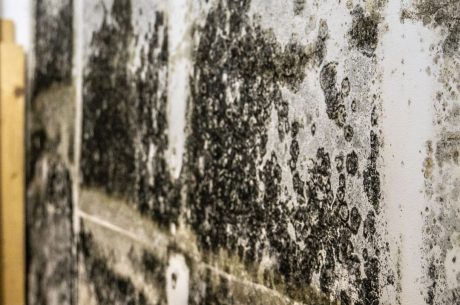When buying, selling, or maintaining a home, one of the most important tools a home inspector uses is often overlooked: the moisture meter. Water damage isn’t always obvious—it doesn’t always show up as stains, leaks, or mold. Hidden moisture can seep behind walls, under floors, and into ceilings, silently damaging a home’s structure over time.

That’s why professional inspectors rely on moisture meters to detect water intrusion before it becomes a major problem. In this guide, we’ll break down what a moisture meter is, how it’s used in home inspections, and why every homeowner should care about the readings it provides.
Table of Contents
What Is a Moisture Meter?
A moisture meter is a handheld device designed to measure the amount of moisture in materials such as wood, drywall, concrete, and flooring.
There are two main types:
- Pin-Type Moisture Meters
- Use two pins that are inserted into the material.
- Measure electrical resistance to detect moisture content.
- Provide very accurate, localized readings.
- Pinless (Non-Invasive) Moisture Meters
- Use electromagnetic signals to scan materials without penetration.
- Cover larger areas quickly and without damage.
- Useful for surfaces like hardwood flooring or finished walls.
Both types are commonly used in home inspections, depending on the surface being tested.
Why Moisture Meters Are Essential in Home Inspections
Moisture is one of the most damaging forces in a home. Left unchecked, it can lead to:
- Mold Growth – Mold thrives in damp environments and poses serious health risks.
- Structural Damage – Water weakens wood framing, subfloors, and drywall.
- Foundation Issues – Excess moisture can crack or shift foundations.
- Electrical Hazards – Moisture near wiring can create fire and shock risks.
A home may look fine on the surface, but it reveals what the eye cannot see.
Common Areas Where Inspectors Use Moisture Meters
During a home inspection, professionals typically check these areas for hidden moisture:
- Basements & Crawl Spaces – Prone to leaks, flooding, and condensation.
- Bathrooms & Kitchens – Around sinks, tubs, dishwashers, and refrigerators.
- Roof & Attics – Detecting leaks around flashing, skylights, or vents.
- Windows & Doors – Common leak points from poor sealing or old frames.
- Exterior Walls – Checking for water intrusion from siding or foundation cracks.
What Do Moisture Meter Readings Mean?
They provide readings expressed as a percentage of moisture content.
- 0–15% – Normal range (dry).
- 16–20% – Elevated levels (potential concern).
- 20%+ – High moisture (likely active leak or water damage).
An inspector’s experience matters here—they interpret the readings in context with the home’s age, condition, and building materials.
Benefits of Using a Moisture Meter in Home Inspections
- Early Detection of Water Damage
Find leaks before they cause visible stains or mold growth. - Better Negotiations in Real Estate
Buyers and sellers can use moisture findings to adjust pricing or repair terms. - Prevent Mold & Health Risks
Identifying hidden dampness reduces the chance of future mold remediation. - Peace of Mind
Homeowners know their property has been thoroughly checked for moisture issues.
Moisture Meters vs. Infrared Cameras
Many inspectors use both. Here’s the difference:
- Moisture Meter: Directly measures water content in materials.
- Infrared Camera: Detects temperature differences that may indicate moisture.
Infrared is great for scanning large areas, but it confirms whether water is truly present.
Should Homeowners Own a Moisture Meter?
For general home maintenance, owning a one can be helpful—especially if your home has a history of leaks, flooding, or high humidity. Homeowners can use them to:
- Monitor basements and crawl spaces.
- Check after heavy storms.
- Inspect around plumbing fixtures.
- Ensure firewood or lumber is dry before use.
However, interpreting results isn’t always straightforward. That’s why professional inspections remain critical.
Professional Water Damage Inspections
When a moisture meter indicates elevated levels, the next step is professional evaluation. Companies like PuroClean use advanced tools including:
- Thermal Imaging Cameras
- Hygrometers (for humidity levels)
- Air Sampling Equipment (for mold risk)
Together, these tools provide a complete picture of a home’s condition.
How Moisture Meters Protect Homes
A moisture meter does more than just detect water—it protects your home, your health, and your investment in several critical ways. Here’s a deeper look at how this small device plays a big role in home maintenance:
1. Preventing Structural Damage
Water is one of the most destructive forces for a home. Even a small leak hidden behind walls, under flooring, or in the attic can compromise your home’s structure over time. Moisture meters allow inspectors to:
- Detect hidden leaks early before drywall, subflooring, or wooden framing is permanently damaged.
- Measure moisture content in structural wood to determine if it is at risk of rotting.
- Identify chronic damp areas that may lead to weakened foundations or warped flooring.
Example: In a basement, a moisture meter reading above 20% in the joists or subfloor can signal a slow leak behind the walls. Early detection allows the homeowner to fix the pipe or waterproof the area before extensive repairs are needed.
2. Reducing the Risk of Mold Growth
Mold thrives in damp, dark spaces, and can spread quickly if not addressed. Hidden mold not only damages building materials but also affects indoor air quality. Moisture meters protect your home by:
- Spotting elevated moisture before mold appears, allowing timely intervention.
- Guiding remediation efforts—technicians can focus on specific high-moisture areas instead of treating the entire home.
- Preventing costly mold remediation by addressing the root cause, not just the visible mold.
Example: An inspector using a moisture meter in a bathroom wall cavity can detect water intrusion from a slow leak under the sink. By repairing the leak immediately, mold never has a chance to take hold.
3. Protecting Electrical and HVAC Systems
Water and electricity are a dangerous combination. Hidden moisture around wiring, outlets, or HVAC units can create fire hazards or system malfunctions. Moisture meters help homeowners:
- Locate damp areas near electrical components before they cause shorts or corrosion.
- Prevent hidden water from damaging HVAC ducts or units, which can be expensive to repair.
- Mitigate potential liability issues for landlords or property managers.
Example: A moisture meter reading in an attic near the HVAC system reveals damp insulation caused by a small roof leak. Addressing it prevents corrosion and maintains HVAC efficiency.
4. Safeguarding Home Value
Homes with hidden water damage or past leaks can lose resale value. Moisture meters protect your investment by:
- Documenting dry conditions during pre-listing inspections, reassuring buyers.
- Identifying problem areas that need repair, avoiding future disputes.
- Providing evidence of proactive maintenance, which can increase buyer confidence.
Example: Before selling a home, a moisture meter inspection shows all wood and drywall are within safe moisture levels, giving buyers peace of mind and protecting the home’s market value.
5. Supporting Preventive Maintenance
Moisture meters aren’t just for detecting problems—they’re also a preventive tool. Homeowners can use them periodically to monitor moisture levels in:
- Basements and crawl spaces
- Attics and roof areas prone to leaks
- Behind appliances like dishwashers and washing machines
- Wood flooring and decks exposed to humidity
Regular monitoring helps homeowners take action before visible damage occurs, saving money and avoiding disruption.
6. Enhancing Insurance Protection
Insurance claims for water damage are often disputed if damage is discovered too late. Moisture meters:
- Provide documented evidence of water intrusion timing and severity.
- Support claims for repairs or replacements caused by sudden leaks.
- Help demonstrate maintenance diligence, which can prevent claim denial due to negligence.
Example: A homeowner detects a slow leak in a basement wall using a moisture meter, documents it, and submits timely insurance claims when the leak worsens, ensuring coverage for repairs.
In short: a moisture meter is a first line of defense against hidden water damage. It protects the home’s structure, prevents mold, safeguards systems and indoor air quality, maintains property value, supports preventive maintenance, and strengthens insurance claims.moisture meter, homeowners protect both their investment and their health.
Final Thoughts
A home inspection moisture meter may look like a simple tool, but its role is critical. It helps inspectors uncover hidden problems, protect homeowners from unexpected repairs, and ensure homes remain safe and sound.
Whether you’re buying a new property, selling your home, or maintaining your current space, make sure your inspector uses a moisture meter. And if results show elevated moisture levels, call in a restoration professional to fix the issue before it spreads.
📞 Need a moisture inspection or water damage assessment? Contact PuroClean of Hempstead with (516) 399-4400 today—your trusted partner for detecting and restoring hidden water damage.



